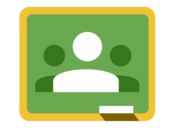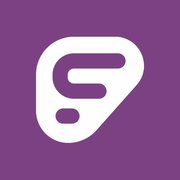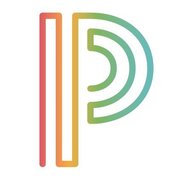Learning Management Systems (LMS)
Learning Management Systems (LMS) Overview
Top Rated Learning Management Products
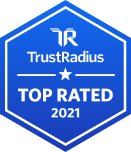
These products won a Top Rated award for having excellent customer satisfaction ratings. The list is based purely on reviews; there is no paid placement, and analyst opinions do not influence the rankings. Read more about the Top Rated criteria.
Learning Management Systems (LMS) TrustMap
TrustMaps are two-dimensional charts that compare products based on trScore and research frequency by prospective buyers. Products must have 10 or more ratings to appear on this TrustMap.
Learning Management Products
(1-25 of 134) Sorted by Most Reviews

Blackbaud Education Management Solutions
Blackbaud Education Management Solutions is a unified student management system for K–12 private schools. Blackbaud Enrollment Management System™: Gives schools and families the ability to track admissions progress from first impressions all the way through the application process…

Schoology aims to combine as many parts of the learning process as possible into a single platform for K-12 students. By doing this they aim to simplify the learning experience for students, parents, and teachers.
Key Features
- Assignments (41)77%7.7
- Course authoring (39)75%7.5
- Mobile friendly (39)55%5.5

Canvas
Instructure is an educational software company based in Sandy, Utah. It is the developer of the Canvas learning management system, which is a comprehensive software package that competes with such systems as Blackboard Learning System, SumTotal and Saba.
Key Features
- Assignments (41)88%8.8
- Course authoring (41)83%8.3
- Mobile friendly (40)67%6.7
Key Features
- Assignments (49)87%8.7
- Mobile friendly (48)83%8.3
- Course authoring (42)82%8.2

Moodle is an open source Learning Management System used by educational institutions. The product is administered by the Moodle Project which is led by Moodle HQ in Australia.
Key Features
- Assignments (23)85%8.5
- Learning administration (21)83%8.3
- Progress tracking & certifications (22)73%7.3

Blackboard Inc. is an enterprise learning management systems vendor. Blackboard was founded in 1997 and became a public company in 2004. The company provides education, mobile, communication, and commerce software and related services to clients including education providers, corporations…
Key Features
- Assignments (29)80%8.0
- Learning content (27)76%7.6
- Mobile friendly (29)49%4.9
Key Features
- Assignments (11)83%8.3
- Learning content (12)79%7.9
- Mobile friendly (13)72%7.2
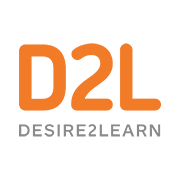
Brightspace is an academic and corporate learning management platform. It provides core e-learning features, as well as mobile accessibility and granular personalization and analytics insights.
Key Features
- Course authoring (9)93%9.3
- Learning content (9)93%9.3
- Progress tracking & certifications (9)93%9.3

Auzmor Learn
Auzmor headquartered in West Des Moines offers Auzmor Learn, a corporate LMS designed to make launching, tracking, and reporting for any type of training, in one centralized location, viewable on any device, with tools to track and encourage employee learning.
Key Features
- Progress tracking & certifications (28)88%8.8
- Assignments (27)87%8.7
- Learning reporting & analytics (28)86%8.6

Tovuti's cloud-based learning management system (LMS) gives users tools to create, deliver, and track the effectiveness of eLearning programs. It helps users to create engaging interactive courses in minutes with Tovuti's interactive modules and a course creation suite. Users can…
Key Features
- Course authoring (23)90%9.0
- Progress tracking & certifications (23)89%8.9
- Course catalog or library (24)84%8.4

WizIQ LMS is designed to meet both teaching and training needs and to give users more control over the learning process. Users can build their learning environment within minutes, add and manage multiple teacher accounts, create online courses, and schedule live classes. This solution…
Key Features
- Learning content (7)59%5.9
- Progress tracking & certifications (7)57%5.7
- Mobile friendly (7)55%5.5

Sakai is an open source learning management system provided by the Apero Foundation. The LMS provides what it calls Core and Expanded Features. The Core Features encompass an integrated tool set that is tested by the Sakai community members and is then included with each new release.…
Key Features
- Learning content (6)90%9.0
- Course authoring (6)90%9.0
- Mobile friendly (6)40%4.0

TalentLMS is designed to deliver engaging online training. This platform offers functionality for course authoring, user testing, extended enterprise, teaching and training administration, and e-commerce for small and midsize businesses and schools. The platform’s course builder…
Key Features
- Learning administration (15)92%9.2
- Progress tracking & certifications (15)92%9.2
- Mobile friendly (13)91%9.1

iSpring Learn is a full-featured LMS for automating corporate training and improving employee performance.The system aims to enable users without technical skills to launch eLearning in one day without training. To start training with the platform, administrators upload learning…
Key Features
- Course authoring (6)91%9.1
- Learning administration (6)82%8.2
- Progress tracking & certifications (6)73%7.3
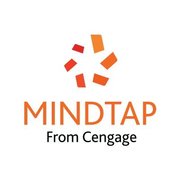
MindTap is an eLearning course management solution from Cengage, the digital learning content and technology provider. For educators, it includes pre-made interactive course materials (such as homework assignments, assessments, etc.), analytics around student engagement and performance,…
Key Features
- Learning content (7)97%9.7
- Assignments (7)97%9.7
- Course authoring (7)86%8.6

UL's ComplianceWire is a Compliance Training Learning Management System (LMS) specializing in life sciences organizations, compliant with 21 CFR Part 11 and EU Annex 11 validation requirements. Presented as a ‘Gold Standard’ Learning Management System (LMS) for the Life Science…
Key Features
- Course catalog or library (7)90%9.0
- Learning content (7)90%9.0
- Progress tracking & certifications (7)87%8.7

Freckle’s differentiation platform is designed to makes it easy for teachers to reach each student at their own individual level—without having to spend extra time preparing many different lessons every day. The Freckle platform was designed by Freckle Education in San Francisco,…
Key Features
- Progress tracking & certifications (7)92%9.2
- Assignments (7)89%8.9
- Learning content (7)84%8.4

ELMO Software (ASX:ELO) is a cloud-based solution that helps thousands of organisations across Australia, New Zealand and the United Kingdom to manage their people, process and pay. ELMO solutions span the entire employee lifecycle from ‘hire to retire’. They can be used together…
Key Features
- Review reminders (5)88%8.8
- Performance plans (5)82%8.2
- Performance improvement plans (5)82%8.2

CoreAchieve is a learning management and content distribution platform designed to drive engagement and revenue, at affordable, predictable costs.According to the vendor key features and business benefits include:Engage with large audiences for one affordable, predictable cost. No…
Key Features
- Course catalog or library (5)98%9.8
- Course authoring (5)96%9.6
- Player/Portal (5)96%9.6
Learn More About Learning Management Systems (LMS)
What is a Learning Management System?
A Learning Management System (LMS) is a platform that helps instructors manage and organize educational materials online and conduct online courses. Learning management systems help streamline the learning process by providing a central location for accessing material online and developing content. LMS software is used by K-12 schools, higher education institutions, school districts, etc.
LMS software benefits administrators, teachers, and students. Students and teachers can access and upload course material such as calendars, syllabi, assignments, and grades. LMS platforms also allow instructors and administrators to track student progress on an individual basis and at the aggregate level. This software also helps minimize the use of paper materials and supports remote learning.
Centralizing educational data provides several advantages. It allows educators and administrators to more easily access student data and curricula. Better data access improves their efficiency and quality of life. It also saves money by avoiding duplicate systems and information repositories. It also allows educators to scalably personalize education and student engagement.
Learning management systems have traditionally been on-premise products. However, the last 5 years and the normalization of remote learning and work has created a shift. Now, some form of cloud-based deployment is considered the standard model for modern LMS. Some vendors will offer hybrid deployment approaches. Hybrid LMS is only necessary in niche use cases, such as when there are unusual data privacy or access control requirements.
Corporate LMS and Learning Content Management Systems
Vendors typically offer either education-focused or corporate-focused LMS. However, some companies offer platforms that can be used for both purposes. Corporate learning management systems are commonly used internally for employee training and externally for customer training. Corporate LMS that are used for online employee training may also be called training management systems, or eTraining/ eLearning portals.
Most learning management vendors will specialize into either academic or corporate use cases. This category focuses on the academic use case. Products in this category will provide more structure for grades management, student data integrations, and parent portals. In contrast, corporate LMS will emphasize more professional development content and accessibility for business users.
Both corporations and educators may use learning content management systems (LCMS) to organize and create content for learning or training purposes. LCMS software focuses on digital learning as the primary educational medium and allows the instructor to create new content. Alternatively, LMS platforms do not focus exclusively on digital learning, but also manage in-person and off-line learning.
LMS vs. eLearning Software
While there is some overlap between LMS platforms and eLearning software, there are a few key differences between the two.
ELearning content software offers the user access to a curated digital library that can include videos, ebooks, and online courses/lessons. The primary function of eLearning software is to provide the user with a large content library for self-guided learning or integration with an LMS platform.
LMS platforms, on the other hand, may not offer content libraries at all. Instead, they focus more on managing the learning process and storing and tracking individual/ aggregate progress. Most vendors offer eLearning software that can be integrated with an LMS platform.
LMS and Virtual Learning Environments (VLE)
The term ‘virtual learning environment’ (VLE), or virtual classroom, is often used synonymously with LMS. These two terms essentially refer to the same products, but emphasize different aspects of the software.
Virtual classrooms typically have a larger focus on the collaborative aspect of learning. Products that are marketed as a VLE may have stronger discussion, forum, or student collaboration features. On the other hand, LMS has traditionally referred to products with strong performance tracking and analysis capabilities. Many LMS vendors have strengthened the virtual classroom aspects of their platforms as virtual-only learning has become either more financially attractive or socially necessary.
LMS Features & Capabilities
Most LMS platforms offer a basic set of features:
- Content creation: Allows instructors to author content and use web tools to embed files from the web or their own files into lesson materials.
- Content management: Allows instructors to share materials between courses and upload materials from the web or their own files.
- Assessment creation: Ability to create new questions/ assessments - including support for various question types, randomization of MCQs, the ability to import third-party question banks etc..
- Assessment management: This can include automatic updating of questions and automatic and manual marking.
- Learning object repository (LOR): An online library for sharing, storing, searching, and managing learning objects (e.g. content, specific lessons etc..)
- Grading and feedback tools: This can include the ability to annotate student submissions and create student reports.
- Course management: This can include course catalogs, course registration management, calendars, gradebooks, and virtual classrooms.
- Student and instructor portals: Individual portals for students/instructors to access course materials.
- Collaboration tools: Ability to comment and share on the LMS interface through channels such as live chat, blog articles, and discussion boards/threads.
- Progress data and analytics: Ability to track student progress against standards such as Common Core or NGSS, identify gaps in individual learning, and set customized learning objectives.
- SCORM/ AICC/ Tin Can Compliant: Ability for an eLearning software and LMS to interact over a standard protocol.
Some vendors offer more advanced capabilities or features aimed more at corporate buyers rather than education institutions:
- Social media support: Ability to integrate social learning tools and keep track of student engagement.
- Mobile app: Allows students and instructors to connect to the LMS interface using a mobile application.
- Blended learning support: Ability to record, share, and assess off-line learning events such as seminars, workshops, demonstrations etc…
- Gamification tools: Using game-mechanics in order to boost user engagement - including things like badges, trophies, leaderboards, or points.
- E-commerce support: Ability to sell educational materials and/or online courses, track purchases, and monitor the performance of marketing initiatives.
Learning Management System Comparison
When comparing learning management systems, consider these factors:
- Mobile accessibility: As mobile devices become the primary method of accessing the internet, they are also an increasingly core method of accessing learning resources and academic information. Be sure to evaluate how optimizes various LMS systems are for mobile-first students, particularly in areas like video content, forums, and grade reporting.
- Scalability: Your LMS platform should support your institution’s expansion, not hinder it. Factors that can influence scalability include whether it is cloud-based or on-premise, the pricing model, and the scope of available features like gamification and native content creation.
- Ease of use and customization: The majority of your LMS users will be teachers and students, so the platform should be as intuitive and easy to use as possible to accommodate a wide range of user capabilities. User reviews will be the best non-trial gauge of how easy an LMS is to learn and regularly use.
- Content creation vs. content management: While most learning management systems have both, LMS platforms will vary in their focus on user-created content and content management capabilities. Before selecting an LMS, determine whether your institution is more focused allowing instructors to design content, courses, and assignments or if managing preexisting content and students’ progress through lessons and courses is a higher priority.
Pricing Information
There is a wide range of free or open source LMS software, for example Moodle, Canvas, and Google Classroom. However, these products can be costly to implement and customize, charge extra for non-basic features, and typically do not include support staff.
Commercial offerings such as Blackboard and McGraw-Hill's Connect are an alternative option. These LMS platforms have higher upfront costs (compared to the free versions), but also typically include a dedicated support staff and professional services. Most paid LMS do not advertise pricing, but quotes frequently range from $2.50-$4 per user per month, up to a certain number of users.
